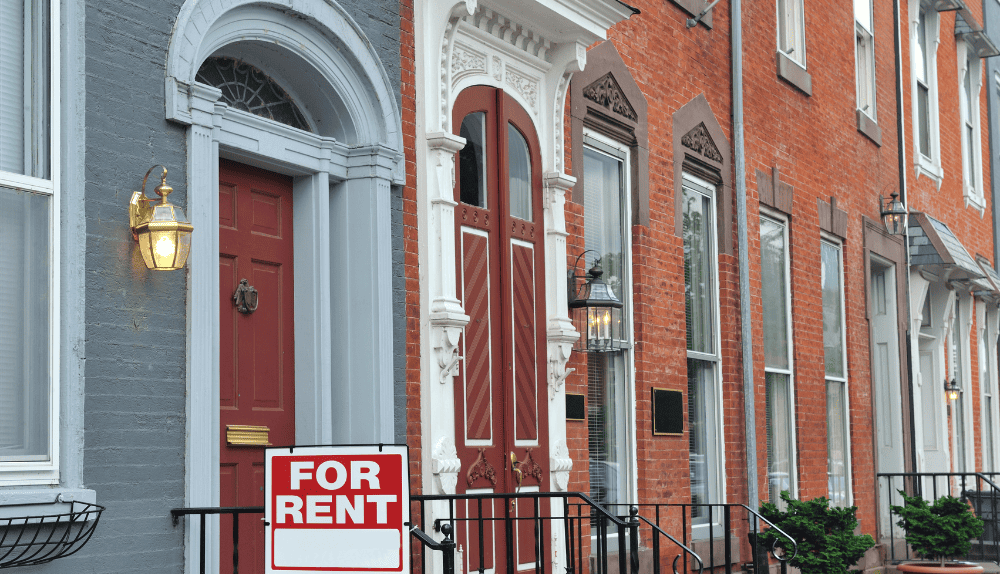How to Rent Your Home in Maryland in 2023: The Ultimate Guide for New Landlords
- May 9, 2023
- admin
- Category: National Housing Market

As the year 2024 approaches, many people may consider to rent out homes in Maryland as a way to earn extra income. If you’re a new landlord in Maryland, you may be wondering how to get started and what steps you need to take to rent out your property successfully. In this comprehensive guide, we’ll walk you through the entire rental process in Maryland and provide you with all the information you need to become a successful landlord.
But first, let’s take a moment to consider to rent out homes in Maryland in 2024 is a good idea. For starters, Maryland has a robust rental market, with high demand for rental properties and competitive rental rates. Additionally, renting out your home can provide a steady source of income that can help you cover expenses or save for the future. And, if you’re planning on moving out of the area temporarily, renting out your home can help you avoid the costs and hassles of selling your property and buying a new one when you return.
So, whether you’re a first-time landlord or an experienced real estate investor, this guide will provide you with the information you need to succeed. Let’s get started!
Rent Out Homes in Maryland – Understanding the Rental Process
As a landlord in Maryland, it’s essential to understand the rental process and the legal requirements that come with it. Here’s a step-by-step guide to the rental process in Maryland:

Legal Requirements for Landlords
Before you can rent out your property in Maryland, you’ll need to meet certain legal requirements. These include:
- Registering your rental property with the Maryland Department of Assessments and Taxation (SDAT).
- Obtaining a rental license from your local jurisdiction (e.g., city or county).
- Complying with local zoning laws and building codes.
- Providing a written lease agreement that complies with Maryland law.
- Complying with fair housing laws, which prohibit discrimination based on factors such as race, gender, and disability.
It’s important to note that these requirements may vary depending on your location and the type of property you’re renting out. Be sure to check with your local government and a qualified attorney to make sure that you’re in compliance with all applicable laws and regulations.
Steps to Renting Out a Property in Maryland
Once you’ve met the legal requirements for landlords in Maryland, you can start the process of renting out your property. Here are the key steps involved:
- Prepare your property for rent: This may involve making repairs, cleaning, and staging your property to attract potential tenants.
- Set a rental price: Research comparable rental properties in your area to determine a fair rental price for your property.
- Advertise your property: Use online listings, social media, and other advertising channels to reach potential tenants.
- Screen potential tenants: Conduct background checks and credit checks, and verify employment and income to make sure that you select a qualified tenant.
- Sign a lease agreement: Use a written lease agreement that complies with Maryland law and clearly outlines the terms of the rental agreement.
- Collect security deposit and first month’s rent: Collect a security deposit and first month’s rent from the tenant before they move in.
- Move-in inspection: Conduct a move-in inspection with the tenant to document the condition of the property at the start of the lease.
Types of Rental Properties in Maryland
Maryland offers a variety of rental properties, including:
- Single-family homes: These are standalone homes that are rented out to one tenant or family.
- Multi-family homes: These are properties that contain multiple rental units, such as duplexes or apartment buildings.
- Condos: These are individually owned units within a larger building or complex, which can be rented out by the owner.
- Townhouses: These are attached homes that are typically rented out to one tenant or family.
Each type of rental property comes with its own advantages and disadvantages, so it’s essential to consider your goals as a landlord and the needs of potential tenants when choosing a property to rent out.
Preparing Your Home for Rent
Before you can start advertising your property for rent, you’ll need to make sure that it’s in good condition and ready for tenants to move in. Here are the steps new landlords should take to prepare their homes for rent:

Cleaning
One of the first steps in preparing your home for rent is to thoroughly clean it. It includes:
- Cleaning all surfaces, including floors, walls, and countertops.
- Deep cleaning of carpets and upholstery.
- Washing windows and screens.
- Cleaning appliances, including the refrigerator and stove.
- Cleaning and disinfecting bathrooms.
You may want to consider hiring a professional cleaning service to make sure that your property is thoroughly cleaned and ready for tenants.
Repairs
Once your home is clean, it’s time to address any repairs that need to be made. It includes:
- Fixing any leaks or water damage.
- Repairing or replacing broken windows, doors, or locks.
- Repairing or replacing damaged flooring, walls, or ceilings.
- Checking and repairing any electrical or plumbing issues.
- Ensuring that the heating and cooling systems are working correctly.
Addressing these repairs before you start advertising your property for rent can help to attract potential tenants and ensure that they have a positive rental experience.
Upgrades
In addition to addressing any necessary repairs, you may want to consider making upgrades to your home to make it more appealing to potential tenants. It may include:
- Updating appliances, such as the refrigerator or dishwasher.
- Installing new flooring or countertops.
- Repainting walls or cabinets.
- Adding new light fixtures or ceiling fans.
- Upgrading the heating or cooling system.
While these upgrades may require an initial investment, they can help to attract higher-quality tenants and increase the rental income you receive from your property over time.
Marketing Your Rental Property
Now that your property is clean, repaired, and upgraded (if necessary), it’s time to start marketing it to potential tenants. Here are some tips and advice on how to effectively market your rental property:
Create a Compelling Listing
When creating a listing for your rental property, make sure to highlight its best features and amenities, such as:
- The number of bedrooms and bathrooms.
- Any special features, such as a pool or fireplace.
- The location and neighborhood.
- The rental price and any included utilities or services.
- Any pet policies or restrictions.
In addition, make sure to include high-quality photos of your property that showcase its best angles and features. You may want to consider hiring a professional photographer to take these photos.
Set the Right Rental Price
Setting the right rental price is crucial in attracting potential tenants and maximizing your rental income. To determine the right rental price for your property, consider factors such as:
- The location and neighborhood.
- The size and condition of your property.
- The local rental market and competition.
- Any included utilities or services.
You can use online rental calculators or consult with a real estate agent to help determine the fair rental price for your property.
Advertise on Relevant Platforms
In addition to creating a listing on a popular rental platform, such as Zillow or Craigslist, consider advertising your property on relevant local platforms, such as:
- Local newspapers or magazines.
- Community bulletin boards.
- Social media groups or pages.
- Local real estate or property management agencies.
By advertising on these platforms, you can reach a wider audience and increase the chances of finding a quality tenant for your rental property.
Tenant Screening and Selection
Once you start receiving applications from potential tenants, it’s essential to screen and select them carefully to make sure that you find a trustworthy tenant who can pay rent on time and also take good care of your property. Here’s how you can conduct a thorough tenant screening process:
Conduct Background Checks
One of the most critical steps in the tenant screening process is conducting a background check on each potential tenant. It can include:
- Checking their credit report to see if they have a history of paying bills on time and managing their finances responsibly.
- Running a criminal background check to ensure that they don’t have a history of criminal activity or violence.
- Verifying their rental history to see if they have a history of evictions or other issues with previous landlords.
There are many online background check services available, or you can hire a professional tenant screening company to do this for you.
Verify Income and Employment
Another critical aspect of the tenant screening process is verifying each applicant’s income and employment status. It can help ensure that they have the financial means to pay rent on time. You can ask for the following:
- Recent pay stubs or tax returns to verify their income.
- Contact information for their employer to verify their employment status.
Check References
Finally, it’s a good idea to check references from each potential tenant to get a sense of their character and reliability. You can ask for references from:
- Previous landlords to get an idea of how they have treated previous rental properties.
- Personal references, such as friends or family members, to get a sense of their overall character and personality.
By conducting a thorough tenant screening process, you can increase the likelihood of finding a quality tenant who will take good care of your property and pay rent on time.
Lease Agreements
Once you have selected a tenant, the next step is to create a lease agreement that outlines the terms of the rental arrangement. In Maryland, there are specific requirements that must be included in a lease agreement, including required disclosures, lease terms, and security deposit requirements.
Required Disclosures
Maryland law requires that certain disclosures be included in a lease agreement. These disclosures include the following:
- Lead paint disclosure: If your property was built before 1978, you must disclose the presence of lead paint and provide the tenant with the EPA’s pamphlet on lead-based paint hazards.
- Smoke detector disclosure: You must disclose the location of smoke detectors in the rental property and verify that they are in working order.
- Notice of tenant’s rights: You must provide the tenant with a notice of their rights as a tenant, including their right to a habitable property, privacy, and security.
Lease Terms
The lease agreement should also include the terms of the rental arrangement, such as:
- Rent amount and due date: Specify the monthly rent amount and the date it is due.
- Length of lease: State the duration of the lease agreement, whether it is a fixed-term lease (e.g., one year) or a month-to-month agreement.
- Late fees: Outline any fees that will be charged if the rent is not paid on time.
- Utilities and services: Indicate which utilities and services (if any) are included in the rent.
Security Deposit Requirements
In Maryland, landlords are allowed to charge a security deposit equal to no more than two months’ rent. The lease agreement should specify the amount of the security deposit, as well as the conditions under which it will be refunded to the tenant.
Managing Your Rental Property
Managing a rental property can be challenging, but it’s an essential part of being a landlord. Let’s discuss the critical elements of managing your rental property effectively.
Maintaining the Property
Regular maintenance of your rental property is essential to keep it in good condition and to attract and retain tenants. This section will cover the following topics:
- Conducting regular inspections
- Scheduling repairs and maintenance
- Responding promptly to tenant requests
Handling Tenant Complaints and Repairs
No matter how well-maintained your rental property is, issues will inevitably arise. In this section, we’ll cover the following topics:
- Responding to tenant complaints
- Addressing repairs and maintenance issues
- Handling emergencies
Collecting Rent
Collecting rent is a critical part of managing your rental property, and it’s essential to do it correctly and consistently. This section will cover the following topics:
- Setting up a rent collection system
- Enforcing late payment fees
- Dealing with non-payment and evictions
Conclusion
Renting out your home in Maryland can be a lucrative and rewarding experience, but it requires careful planning, preparation, and management. By following the steps outlined in this guide, you can become a successful landlord and enjoy the benefits of passive income and long-term wealth building.
Remember to always prioritize your tenants’ needs, maintain your property regularly, and stay up-to-date with Maryland’s rental laws and regulations. With patience, persistence, and a commitment to excellence, you can achieve your goals as a new landlord in Maryland. Best of luck on your rental journey!
FAQs
How much should I charge for rent in Maryland?
The rental price for your home in Maryland will depend on several factors, including its location, size, condition, and amenities. You should conduct a rental market analysis to determine the fair market value of your property and set a competitive rental price.
What are my responsibilities as a landlord in Maryland?
As a landlord in Maryland, you are responsible for maintaining your rental property in a safe and habitable condition, providing essential services and repairs, and following all applicable state and local laws and regulations.
How do I screen potential tenants for my rental property?
You can screen potential tenants for your rental property by conducting background checks, verifying employment and income, checking references, and interviewing them in person.
Can I evict a tenant in Maryland?
Yes, you can evict a tenant in Maryland for a valid legal reason, such as failure to pay rent or violating the lease agreement. However, you must follow the proper legal procedures and obtain a court order before evicting a tenant.




